 “Success is not the result of spontaneous combustion. You must set yourself on fire.” – Reggie Leach, retired Canadian hockey player.
“Success is not the result of spontaneous combustion. You must set yourself on fire.” – Reggie Leach, retired Canadian hockey player.
Do you set yourself on fire when you write? When the flame gets low, how to you make it glow again?

Celebrating our success is a must. A little reward for a job well done is vital to keep motivated (and happy and healthy) in this difficult writing business. It doesn’t have to be much—just enough of a kickback to make it worthwhile.
It’s one thing to celebrate our personal achievement. It’s a whole other level to get satisfaction from celebrating others’ success. And it’s something we, as a collective writer community, should do more of. Celebrate others’ success.
What brought-on this post is Sue Coletta’s most recent success. Sue was the top-selling author at her publishing house in September. I can think of no other person who is as dedicated to their craft as Sue. And it paid off. Well done, Sue!
Recognizing success doesn’t have to be in the writing world. My friend just celebrated a blue ribbon at the fall fair won by her huge butternut squash. It weighed-in at 37.25 lbs. Sure, it’s a long way off the world record of 65.5 lbs., but it’s an impressive big gourd. Totally organic, to boot. It was grown through her neighbor’s organically-fed hens’ manure.
Our 34-year-old daughter’s success is impressive, as well. Emily recently packed up and moved to Ecuador where she’ll continue her online writing business as a digital nomad. So, congrats on your courage and adventuresome spirit, Em. OPD’s proud of you, and I celebrate your successful move! (BTW—OPD stands for Over Protective Dad which she nicknamed me in her teens.)
No. it isn’t only writing, moving, or squash growing success to celebrate. On a large scale, I celebrate NASA for bulls-eyeing an asteroid some zillion miles away. I celebrate the Ukrainian people’s resolve to repel an invader. And I celebrate Aaron Judge for hitting 62 homers this season.
On a smaller scale, I celebrate someone else’s success. That was the couple in my home town who stood up to City Hall and won the court-approved right to keep a noisy rooster in their backyard coop. That rooster services the organically-fed hens in my friend’s neighbor’s yard whose poop helped her score the blue ribbon.

What about you Kill Zoners? Tell us how you’ve celebrated others’ success.
Full disclosure: I’m cheating again. I owe a book to my publisher on October 15, and it gets all my attention for a while. So, I decided I’d test everyone’s patience by recycling a post from January, 2017, in which I wrote about one of my favorite topics, which is things that go boom. I’m confident that the laws of physics and chemistry have not changed in the past five years, so the content should still be reliable. Here we go . . .
I’m going to continue my quest to help writers understand some of the technical aspects of weaponry so that their action scenes can be more realistic. Today, we’re going to talk about some practical applications for high explosives. It’s been a while since we last got into the weeds of things that go boom, so if you want a quick refresher, feel free to click here. We’ll wait for you.
Welcome back.
When I was a kid, the whole point of playing with cherry bombs and lady fingers and M80s was to make a big bang. Or, maybe to launch a galvanized bucket into the air. (By the way, if you’re ever tempted to light a cherry bomb and flush it down the toilet, be sure you’re at a friend’s house, not your own. Just sayin’. And you’re welcome.) As I got older and more sophisticated in my knowledge of such things, I realized that while making craters for craters’ sake was deeply satisfying, the real-life application of explosives is more nuanced.
Since TKZ is about writing thrillers and suspense fiction, I’m going to limit what follows to explosives used as weapons–to kill people and break things. Of course, there are many more constructive uses for highly energetic materials, and while the principles are universal, the applications are very different.
Hand grenades are simple, lethal and un-artful bits of destructive weaponry. Containing only 6-7 ounces of explosive (usually Composition B, or “Comp B”), they are designed to wreak havoc in relatively small spaces. The M67 grenade that is commonly used by US forces has a fatality radius of 5 meters and an injury
only 6-7 ounces of explosive (usually Composition B, or “Comp B”), they are designed to wreak havoc in relatively small spaces. The M67 grenade that is commonly used by US forces has a fatality radius of 5 meters and an injury  radius of 15 meters. Within those ranges, the primary mechanisms of injury are pressure and fragmentation.
radius of 15 meters. Within those ranges, the primary mechanisms of injury are pressure and fragmentation.
For the most part, all hand grenades work on the same principles. By pulling the safety pin and releasing the striker lever (the “spoon”), the operator releases a striker–think of it as a firing pin–that strikes a percussion cap which ignites a pyrotechnic fuse that will burn for four or five seconds before it initiates the detonator and the grenade goes bang. It’s important to note that once that spoon flies, there’s no going back.
Claymore mines operate on the same tactical principle as a shotgun, in the sense that  it is designed to send a massive jet of pellets downrange, to devastating effect. Invented by a guy named Norman MacLeod, the mine is named after a Scottish sword used in Medieval times. Unlike the hand grenade, which sends its fragments out in all directions, the Claymore is directional by design. (I’ve always been amused by the embossed letters on the front of every Claymore mine, which read, “front toward enemy.” As Peter Venkman famously said while hunting ghosts, “Important safety tip. Thanks,Egon.”)
it is designed to send a massive jet of pellets downrange, to devastating effect. Invented by a guy named Norman MacLeod, the mine is named after a Scottish sword used in Medieval times. Unlike the hand grenade, which sends its fragments out in all directions, the Claymore is directional by design. (I’ve always been amused by the embossed letters on the front of every Claymore mine, which read, “front toward enemy.” As Peter Venkman famously said while hunting ghosts, “Important safety tip. Thanks,Egon.”)
The guts of a Claymore consist of a 1.5-pound slab of C-4 explosive and about 700 3.2 millimeter steel 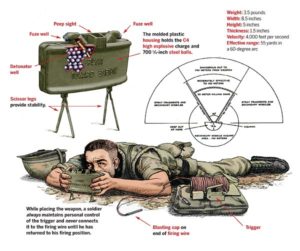 balls. When the mine is detonated by remote control, those steel balls launch downrange at over 3,900 feet per second in a 60-degree pattern that is six and a half feet tall and 55 yards wide at a spot that is 50 meters down range.
balls. When the mine is detonated by remote control, those steel balls launch downrange at over 3,900 feet per second in a 60-degree pattern that is six and a half feet tall and 55 yards wide at a spot that is 50 meters down range.
The fatality range of a Claymore mine is 50 meters, and the injury range is 100 meters. (Note that because of the directional nature of the Claymore, we’re noting ranges, whereas with the omnidirectional hand grenade, we noted radii.)
Both the hand grenade and the Claymore mine are considered to be anti-personnel weapons. While they’ll certainly leave an ugly dent in a car and would punch through the walls of standard construction, they would do little more than scratch the paint on an armored vehicle like a tank. To kill a tank, we need to pierce that heavy armor, and to do that, we put the laws of physics to work for us.
Shaped charges are designed to direct a detonation wave in a way that focuses 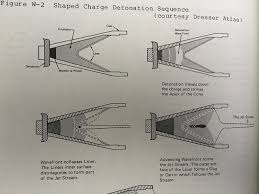 tremendous energy on a single spot, thus piercing even heavy armor. The principle is simple and enormously effective.
tremendous energy on a single spot, thus piercing even heavy armor. The principle is simple and enormously effective.
The illustration on the left shows a cutaway view of a classic shaped charge munition. You’re looking at a cross-section of a hollow cone of explosives. Imagine that you’re looking into an empty martini glass where the inside of the glass is made of cast explosive that is then covered with a thin layer of metal. The explosive is essentially sandwiched between external and internal conical walls. The open end of the cone is the front of the munition.
The initiator/detonator is seated at the pointy end of the cone (the rear of the munition), and when it goes off, a lot happens in the next few microseconds.  As the charge detonates, the blast waves that are directed toward the center of the cone combine and multiply while reducing that center liner into a molten jet that is propelled by enormous energy. When that jet impacts a tank’s armor, its energy transforms the armor to molten steel which is then propelled into the confines of the vehicle, which becomes a very unpleasant place to be. The photo of the big disk with the hole in the middle bears the classic look of a hit by a shaped charge.
As the charge detonates, the blast waves that are directed toward the center of the cone combine and multiply while reducing that center liner into a molten jet that is propelled by enormous energy. When that jet impacts a tank’s armor, its energy transforms the armor to molten steel which is then propelled into the confines of the vehicle, which becomes a very unpleasant place to be. The photo of the big disk with the hole in the middle bears the classic look of a hit by a shaped charge.
 Now you understand why rocket-propelled grenades like the one in the picture have such a distinctive shape. The nose cone is there for stability in flight, and it also houses the triggering mechanisms.
Now you understand why rocket-propelled grenades like the one in the picture have such a distinctive shape. The nose cone is there for stability in flight, and it also houses the triggering mechanisms.
 The picture on the right is a single frame from a demonstration video in which somebody shot a travel trailer with an RPG. The arrow shows the direction of the munition’s flight. There was no armor to pierce so the videographer was able to capture the raw power of that supersonic jet of energy from the shaped charge.
The picture on the right is a single frame from a demonstration video in which somebody shot a travel trailer with an RPG. The arrow shows the direction of the munition’s flight. There was no armor to pierce so the videographer was able to capture the raw power of that supersonic jet of energy from the shaped charge.
Looming deadline notwithstanding, I will do my best to answer any and all questions, but I warn you all that I might be a bit slow on the keyboard.
(Morning, crime dogs. I am out of the country and purposely out of computer contact for four weeks on a two-year-delayed vacation. When you read this, I hope to be sitting in a Paris cafe, sipping vin de maison and stuffing my face with a croque monsieur. So forgive me, but I’m posting a couple of old columns. I will try to check in via iPhone. À bientôt!)
Nothing will stop you from being creative so effectively as the fear of making a mistake. — John Cleese.
By PJ Parrish
I’ll never forget this piece of advice I got from my agent: “No one is waiting for your stand alone thriller.”

Immediately, my hackles went up. (As I wrote that, I realized I didn’t really know what a hackle even was so I Googled it. It is the hairs on the back of dog that shoot up when he’s angry). I said nothing to the agent, but hackles erect, I hung up the phone, and opened the laptop to finish my stand alone thriller.
See, we were eleven books deep into our Louis Kincaid series at the time, and the series had done pretty good thus far. We had a loyal fan base who really loved our character. We’d won some awards and cracked some bestseller lists. But here’s the thing: I had this idea for a serial killer book set in Paris and I couldn’t let go of it. The bad guy — a professional cellist — haunted my dreams at night and kept my imagination afire during the day. I couldn’t get anything done on the series book. The stand alone was a siren call.
Would it crash us on the rocks? Well, maybe. At the time, we were coming up on a contract renewal with our publisher and they were expecting a new Louis book. But Louis was, well, being sort of recalcitrant. The story wasn’t moving along because he just wasn’t talking to me. We clearly needed a vacation from each other.
So I took up with the killer cellist. The book poured out of me, uncharacteristically. (I am a really slow writer). And it was really good. I’m not being immodest here. Every writer just knows when they’re onto something. it was solid plot-wise, filled with cool pretzelly stuff. It had a haunted protag, a prickly side-kick woman cop, and a charming villain who just had a hangup about garroting women with e-strings. It also had Paris’s catacombs, Miami’s decaying art deco hotels and crumbling Scottish castles.
What wasn’t to love?
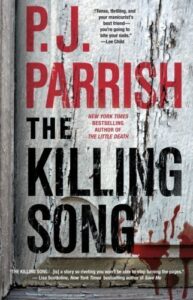
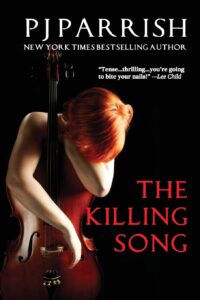
The publisher grudgingly put it out. No promotion, small press run and an ugly cover. (see above left for original cover and right for new cover when we re-issued it). It got some nice reviews and didn’t sell well (though it sells fine now as a back list title). It remains one of my favorite books. We were dropped by the publisher not long after that.
Did I make a mistake?
My agent was probably just trying to tell me that we didn’t have the star-power name to write whatever we wanted, that we needed to rely on the safety our our serial reputation. Stay with what brung you to the dance, right? But no, I don’t think it was a mistake. Here’s my take-away for any of you out there who might be struggling with the fear that you might make a mistake:
Anyone who has never made a mistake has never tried anything new.
Okay, that’s not my words. Albert Einstein said them. But I believe them. If you write in fear of doing something wrong, you are doomed. Whether you are venturing into a new genre, experimenting with a different plot structure, or trying to write a short story for the first time, or just switching from the comfort of first person to third, you can’t be afraid to fail.
I had to write that book. I just had to.
But how do you know when you’re onto something good? How do you trust your instinct to stay with a story when your brain might be telling you to jump on the neo-fem-jeop bandwagon? (female in jeopardy but with a new twist, of course).
That’s a hard one. No one can answer that one except you. It’s part of that chimeric thing we call voice. Why would you want to be a poor man’s Jeff Deaver? Or another sad clone of Gillian Flynn? Write the book that only you can write.
Here’s something else to chew on: Sometimes doing something the wrong way is the only way to find the right way. Writing fiction is not a straight-forward process. Yes, there are basic tenets of what makes a story work — plot structure, dialogue, all the craft stuff we talk about all the time here. But even if you follow every “rule” to the letter, there’s no guarantee you’re going to succeed. If you concentrate on what is safe, what is trendy, what is sell-able (revelation: No one really knows what will sell) you will produce junk.
Maybe, after all your work, no editor will want to publish your book. Maybe, after you work hard to get it up on Amazon yourself, not enough readers will find it. Was it a mistake?
So, what’s my final takeaway from all this? What did I learn from my mistake of writing the stand alone thriller that no one was waiting for?
Don’t write the book you think might sell. You have to write the book that is tearing at your insides to get out.
Write the book that keeps you up at night.

Even in this image you can see different personality types.
There’s a popular TV adaptation of a thriller series that drives me crazy, but it’s a perfect example of what not to do.
The first problem is characterization. Every single female on the show is the same—strong, badass, snarky, and walks all over the meek male characters, who all seem to cower in their presence.
Lesson: Each character must have unique traits. All women are not strong. All men are not meek. Just as all characters are not beautiful or handsome. They’re individuals with their own quirks, strengths, flaws, etc.
The main character and her best friend are particularly annoying. I won’t get too deep into their backstory. Briefly, they both loved the same man (MC’s husband) who dies by the hand of a serial killer.
Now, either the writer knows nothing about women, or he lives in a dream world, because these two badass women move past the fact that they were sleeping with the same guy and open a PI business together.
Seriously? I don’t about you, but if another woman slept with my husband right before he died, we certainly wouldn’t become best friends and business partners. I’d hunt her for the rest of my life.
Ahem.
Lesson: If you know nothing about cheating or loss, ask someone who does.
Early on there was some mention that the MC was on the force at one point. Husband dies. She gains a new best friend, and the two women open a PI business to chase the serial killer who killed Mr. Wonderful. But because she’s so tough she walks all over the Sheriff and his deputies. And soon, he hands her a badge. On her first day, she’s basically running the whole department.
Now, I’m all for a strong female lead, but come on!
Keep in mind, she still owns half the PI business. Conflict of interest? Nah. In fact, she interviews more criminals with her best friend (who is not law enforcement) than she does with her meek male partner. And get this — she and her PI partner both have the power to make deals with criminals, like no jail time if you give up so-and-so. What??? There’s no DA is this story world? Apparently not.
Warrants also don’t exist, unless the writer needs to buy time. Otherwise, if she wants to kick in a door, she does. She even fights much larger male characters and wins every single time. Oh, and she puts out APBs instead of BOLOs.
Lesson #1: An APB and BOLO are two different things. An All Points Bulletin (APB) might be released when there’s a prison break and they want “all points” to get the message. A Be On the Look Out (BOLO) is more traditional these days for when a specific person and/or vehicle is wanted in connection with a crime.
Same goes for 187 to indicate a homicide. It’s a gang term not used by law enforcement with the exception of California. California operates differently than the rest of the country, so check with local law enforcement.
Lesson #2: Do your homework, writers! If you’re unsure if they use APB or BOLO, call and ask. Most departments will happily answer questions from writers.
Lesson #3: Characters must fail, or they become ridiculous and unrealistic. There’s also no character arc without failure. These characters have not changed one iota from the first episode to the last.
Lesson #4: There are laws in this country, and the vast majority of law enforcement work within the law. Can a cop character cut corners once in a while? Within reason, I suppose, but they cannot blatantly disregard the law entirely.
Let’s talk about the serial killer character for a moment. He could not be more stereotyped with Mommy issues, etc. Another eye roll character with no redeeming qualities whatsoever. And—surprise, surprise—a dirty cop is protecting him. At the end of season one, the cop dies. But fear not! He’s back in season two. Can anyone guess how?
Anyone? Anyone?
He’s a twin, of course. A twin, I might add, that no one knew about…until the writer needed an easy way to continue the series.
Lesson: Whatever solution first pops into your mind is a cop-out. Dig deeper and work for a solution that isn’t eye-roll-worthy.
It gets worse. The twin brother gets shot—in the head!—and is still able to flee before capture. Gotta continue the series, right? Wrong. If you kill a character, that’s it. You don’t get to magically move the bullet to his shoulder because it’s convenient.
Lesson: You cannot perform medical miracles to suit your story. Unless you’re writing sci-fi or fantasy.
Now, I will say, I haven’t read the novels, nor will I after sitting through the series while pounding out notes on my phone. It’s possible the film industry destroyed the novels. I doubt it because the author consults on set, but maybe the books aren’t as ridiculous.
I keep watching for two reasons:
If you’ve figured out the series, please don’t mention the title.

If you enjoy strong and snarky female leads (not cardboard cutouts who never fail), check out WINGS OF MAYHEM, Book 1 of the Mayhem Series.
by James Scott Bell
@jamesscottbell
 James N. Frey, author of the popular craft books How to Write a Damn Good Novel I & II, once gave a talk to a group of wannabe writers. He told them he’d give them ten rules which would guarantee they’d learn to write great fiction. Here they are:
James N. Frey, author of the popular craft books How to Write a Damn Good Novel I & II, once gave a talk to a group of wannabe writers. He told them he’d give them ten rules which would guarantee they’d learn to write great fiction. Here they are:
Read! Read! Read!
Write! Write! Write!
Suffer! Suffer! Suffer!
Actually, that’s only nine. His tenth will be revealed anon. Let’s first do a little unpacking.
Read! Read! Read!
By this, Frey meant not just reading fiction, but also widely in all areas. “A fiction writer needs a grasp of history and philosophy, art, religion, poetry, and so on, in order to understand different viewpoints and world views, to make his or her characters whole. As a fiction writer, you need to be curious about the world and read about things you might not be interested in personally. Professionally, you need to be interested in everything.”
I like that. I am always reading nonfiction to expand my knowledge base. I even read random articles in the Encyclopedia Britannica set left to me by my grandfather (who sold them during the Depression). Inevitably, I find something which I’ll work into a short story or even a WIP.
Frey does advise reading fiction in your genre to know what’s going on in the market. True that as well.
Write! Write! Write!
We all know you have to write, a lot, to get good. That’s why I’ve always stressed the quota. As Frey puts it, “The more you write every day, the faster you learn.”
I’d add a caveat to that, however. The basketball coach Bob Knight once said, “Practice doesn’t make perfect; perfect practice makes perfect.”
In other words, you can write, write, write, but if you’re not also learning how to make your writing better, you’re just ingraining bad habits. You don’t want to be like those thousand monkeys hammering typewriters for a thousand years to randomly come up with Shakespeare.
So you get feedback and study the craft along with your daily writing. When I started on this road I bought craft books by the barrel, because I’d been told you can’t learn how to write great fiction. I knew I couldn’t, so set out to see if I could prove that admonition wrong. I think I’ve made a pretty good case. When I got a five-book contract I started calling it “The Big Lie.”
So write, write, write and learn, learn, learn.
And write not only for publication, but to practice various styles. Find that elusive thing called Voice. Frey offers the sage advice of taking stylists you like and copying their prose, word for word. Not to be them, but to get their cadences in your head, the sound and the flow of the words. Let that all meld in your head and you’ll soon develop a style of your own.
Suffer! Suffer! Suffer!
“Learning the craft of writing is difficult,” says Frey. “Creating stories is sometimes agonizing, rewriting is torturous. Dealing with editors is like being tossed into the lions’ den at lunch time. Then when you’re finally published, often your publisher will not do enough publicity and the critics will probably crown you with thorns.”
Frey wrote this before the self-publishing revolution, but the advice still holds. Even as an indie you have to work through obstacles, like an indifferent or hostile public (file this under “Reviews, one-star”).
So why do we do it? Frey: “To experience the ecstasy inherent in the act of participation in the creation of the world, my friend….Living a writer’s life, a life of reflection, of personal growth, of accomplishment, of working and striving and suffering for one’s art, that is its own glory.” (See also the responses to Garry’s recent post.)
I’m reminded of the famous “Soup Nazi” episode of Seinfeld. Remember? His soup is so amazing everyone lines up to get it. But you must order it a certain way. No talking in line, no extraneous comments, or you’ll hear, “No soup for you!”
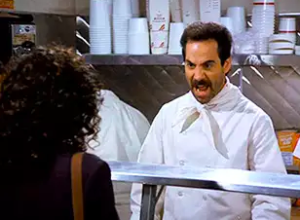
“No soup for you!”
Kramer becomes his one ally, and says to him, “You suffer for your soup!”
The Soup Nazi nods. “How can I tolerate any less from my customers?”
Indeed! We all want to make the best soup. We want to gift our readers the best writing we can muster. That takes work. But when you see the results…when you get an email—that’s not from your mother—telling you how much they loved your story….that is its own reward.
As good old Aristotle put it, “Suffering becomes beautiful when anyone bears great calamities with cheerfulness, not through insensibility but through greatness of mind.”
And what of Frey’s tenth rule? It is: “Don’t use too many exclamation points!”
I agree with that!
My eleventh rule would be this: “Repeat over and over the rest of your life.”
Because you’re a writer. It’s what you do.
So what do you think of this list? What would you add or expand?
Mr. Frey’s article can be found here.
Info dumps will kill the pace of a novel in a heartbeat, in my opinion.
Hopefully our readers are lost in the world we’ve created, but when an author pauses to jar them back into the physical pages by including blocks of details that can be successfully distributed at other times throughout the book, we’ve done them a disservice.
When descriptions, backstories, or elements are released at the volume of an open fire hydrant, all of those specifics will stall the novel’s momentum.
Timing is also critical. Is it necessary to stop the story with details about a person’s clothes, hair, or wrinkles? Why not introduce those characters with a detail or two, them build on that description as we get to know them.
Why not show them those elements? By showing and not telling, you can include more action, and keeping it in your character’s point of view, those factors are less noticeable.
Your protagonist can run fingers through thick gray hair. He can pop a button on a soft, often washed denim shirt he’d owned since college. She can unconsciously touch a scar across the bridge of her nose that she received in an auto accident when she was six and is now terrified of Mustangs. He prefers a Beretta M9 because he carried one in the military.
Imagine meeting someone at a party.
“Hello, my name’s Reavis Z. Wortham and as you can see, I have gray hair, though thin on top, and I’m kinda lanky, measuring in at five foot eleven inches. My polished black boots are ostrich skin, but I wear jeans and my shirts lean toward blue, because that’s my favorite color. Since I’m a fifth generation Texan, I wear a felt silverbelly hat. These brown eyes can look right through a person if I dislike them, and the crows-feet at the corners of my eyes tell a story.”
Good lord! I’d run from myself, or pour a stiff drink and hope the next person I meet will give me information about themselves and their lives a little at a time as we get to know each other.
Think back to a first date. Would you finish the evening if that individual pours out similar information in long, boring paragraphs?
Instead, let’s seed your character’s past, interests, or physical descriptions that are throughout the story.
Now, with all that said, rules are made to be broken. I’ve heard that it’s terrible for an author to put their character in front of a mirror to describe them, and that’s true most of the time.
However, I cheated with a mirror in my novel, Dark Places (which was listed by Strand Magazine as one of their Top 12 novels of 2015, so I know it worked). But I cheated in a creative way that gives the reader a backstory and attributes of two characters who we met much earlier in the book.
In Dark Places, my teenage female protagonist, Pepper, runs away from home in the late 1960s to follow Route 66 from Texas to California. Her dad, James, granddaddy Ned Parker, and a tough, mysterious character named Crow are on her trail. They fear she’s been picked up by a gang similar to the Hells Angels, and one of the three have to go inside a biker bar in the desert to get her out.
Of course I sprinkled physical characteristics for all the players on stage throughout the first and second act to give them depth, but now I needed to drill down even more so we can see who is most qualified to take on a biker gang.
They argue in a room in my fictional mid-century motor court and we learn which one is hard enough to take on the gang.
Here’s that except from the novel.
*
Crow and James were arguing about who would go to the bar where the Devil Rattlesnakes hung out. Standing beside the window, James fumed. “It’s my daughter in that saloon!”
Expressionless, Crow nodded. “I completely understand. But for one thing, we don’t know for sure she’s in there, and I kinda doubt it. What do you do for a living?”
“What? I run a hardware store.”
“Ever been in a fight, other than the one in the courthouse?”
James squared his shoulders. “Yeah. More than one, too.”
“Um hum. I meant after you got out of school.”
“No.”
“Any experience in law work, like your daddy there?”
“No.”
Crow tapped the dresser with a fingertip. “Come here.”
“What?”
Softly. “Come here.”
James joined him. Crow pointed at the mirror. “Tell me what you see.”
“I see us.”
“Right. Tell me what you really see. Truthfully. Describe…us. Start with you.”
“This is ridiculous.”
“It’ll explain what I’m trying to tell you, James. What do you see? Describe your head.”
James Parker looked into the mirror. “A head.”
Crow nudged him with a hard shoulder.
“All right. Short, graying black hair of a man in his late thirties. Cowlick. Two eyebrows, also black. Brown eyes. A nose. Two ears that need trimming, I guess. Lips, and a chin with a dimple.”
“That’s about right. Now, describe me.”
“A guy with long hair.”
“More detail. Lots of detail, more than you used on yourself, but don’t stop at my chin.”
James growled in frustration, low in his throat. He drew a deep breath. “Long black hair, like an Indian.”
“I am Indian, but you’re right. Keep going.”
“Hair that looks like them hippies, then. A scar across your forehead from the middle to your temple. Black eyebrows. Almost black eyes. Indian cheekbones. No mustache or beard though, like those hippies, but that’s because you’re Indian again. A nose that looks like it’s been broke before…”
“Twice.”
“Huh. Square chin with a horizontal scar in the cleft under your bottom lip. Scar on one ear. Wide shoulders. Some kind of necklace under your western shirt that needs washing, but it was expensive when it was new. Shirt’s hanging outside your jeans. You look tough.” He looked down. “Levis and work boots.”
Crow flexed his hands. “These?”
“Big hands. Big knucks. Lots of scars.”
Crow turned them over.
“Rough. Calluses.”
“So between me and you, who do you think has more luck walking into a rough bar full of bikers?”
*
We already knew a lot about those two, but it was necessary at that point in the story to pit James and Crow against one another in front of that mirror. It was timing.
Yep, I threw a lot out there, but paragraphs of information didn’t stall the story. Instead, I chose to show and not tell by providing those details in conversation, which flows naturally, hopefully making the readers part of the story. With what I provided, you were able to build those characters and see them in your mind’s eye.
Weave your story elements as you go. One quick sentence or two to set a scene, a couple of sentences further down to provide a backstory for your protagonist, or a phrase here or there are the building blocks of a successful story.
Remember, no dumping allowed.

Pets and animals in fiction is a huge topic. Interestingly, a quick search of Amazon didn’t bring up any book on the topic. So, readers/writers, there’s a void to be filled by an animal enthusiast. I did find an excellent post on the subject by Sue Coletta – Tips to Include Pets in Fiction
Today, let’s discuss two things:
Your favorite pet:
Looking back at your entire life, which pet was/is your all-time favorite? Tell us about that pet and why he or she was so special.
The roles pets and animals play in books you enjoy:
As a reader of fiction, what way of using pets or animals in the story do you find most enjoyable? Explain.
Why do writers want to write?
Good question, and one put to me the other morning that caused evening introspection. Let me tell you how that came to be.
Rita (my wife of thirty-nine years) and I are on a week’s getaway to Galiano Island near our home on British Columbia’s Pacific west coast. We met another couple at the tie-up wharf and got talking. You know, general stuff… “Where you from? How long you here? Where you headed after this?”
Then came a question aimed at me. “What do you do when you’re not on vacation?”
“’Besides bleeding money through the stock market,” I replied. “I’m a writer.”
“Interesting. What makes you want to write?”
I wasn’t stuck for an answer, but I was stuck for the right answer. Later that night (after five five-o’clocks on the dock which is mandatory attendance among the boating fraternity), I introspected with Google searches about writer motivation. I came up with a Youtube video by a remarkable young singer/songwriter named Meskerem Mees. She summed my introspection with this line in the lyrics from her piece titled The Writer:
“And I am but a writer, so writing’s what I do.”
Kill Zone writers, Ms. Mees’s song is uplifting. Here are the links to the video and the lyrics.
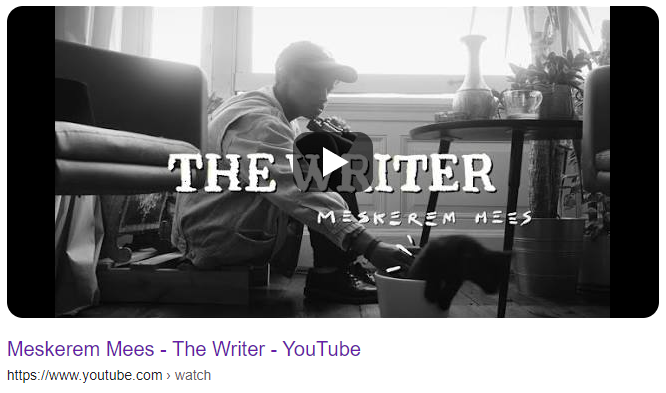
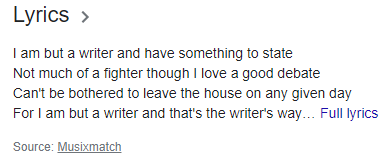 And the takeaway question which you’re expected to answer—why do you want to write?
And the takeaway question which you’re expected to answer—why do you want to write?
Gimmicks or Good Plot Devices?
Terry Odell
My recent reading has included two mysteries where the ‘bad guys’ went into “do I buy this?” territory for me, for various reasons. Both were well-written and good reads, so this post is more for discussion than me saying ‘do this’ or ‘don’t do this.’ I always like what the TKZ peeps have to contribute. Sadly, I have an emergency trip so I won’t be around much to respond to comments, but I know you will keep things going.
Keeping the villain’s identity hidden from readers in mysteries (my genre of choice) is a challenge. Neither book fell into the “you don’t see the villain until the gather all suspects into the parlor category, so there was no sense of cheating the reader.
In one book, there was a set of identical twins. No, it wasn’t a case of them pretending to be each other, which I consider a major contrivance (and I happen to be the mother of a set of twins, although they’re fraternal). Before I gave birth to them, I was of the “twins are a plot copout” mindset. They still can be, but that’s another issue, and I digress.
In the twins book, one was a very dependent individual, who the dominant twin, who also happened to be the killer, took responsibility for. Another twist—the dependent twin was in the midst of transitioning to female (is that a correct term these days?) and was more or less in hiding during the process. The reader was aware of the character’s existence via phone calls from the other twin, but there wasn’t much of an on-the-page presence until it was time to reveal the secret. When I got to that point, I had minor niggles of “is this playing coy with the reader?” Was it too much of a stretch from day to day reality? Or, do reader want departures from the logical, day to day reality?
The other book relied on the killer having Dissociative Identity Disorder (multiple personalities) and the cops were looking for what they thought were two different people. Who later turned out to be three. DID is real, but it affects less than 2% of the population, and most cases are female. In this book, the character was male. Still, it’s a “this could happen” scenario.
For the twins, I can accept the ploy, because the second twin could have been anyone the killer felt close to or responsible for.
In the case of the DID character(s), the condition is so rare that there was an underlying feeling of “although it could happen, I’m not sure it’s working for me.”
What’s your take on using the very low percentage condition for a villain in a mystery? Would you go back and re-read to find where the author left clues?
Now Available: Cruising Undercover
It’s supposed to be a simple assignment aboard a luxury yacht, but soon, he’s in over his head.
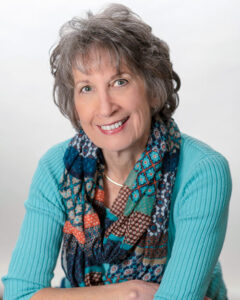 Terry Odell is an award-winning author of Mystery and Romantic Suspense, although she prefers to think of them all as “Mysteries with Relationships.”
Terry Odell is an award-winning author of Mystery and Romantic Suspense, although she prefers to think of them all as “Mysteries with Relationships.”